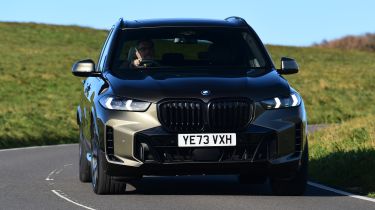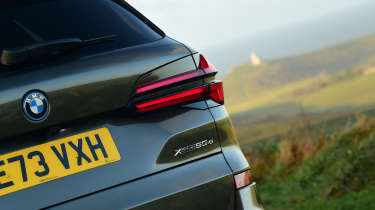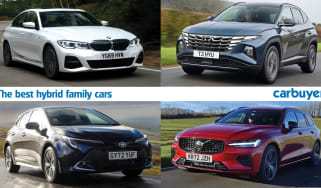BMW X5 review - Engines, drive & performance
"The BMW X5 is one of the best large SUVs to drive and comes with a range of powerful engines"
No matter which engine you choose, the BMW X5 is a very potent SUV that lives up to the model's reputation for performance. Every engine sends power to all four wheels for extra traction, via one of the smoothest eight-speed automatic gearboxes on the market.
The four-wheel drive system is programmed to send more power to the rear wheels in most driving situations, for a sporty feel through corners. This helps the X5 to be impressively agile for a large SUV, with accurate steering and little body lean. It's not quite as freakishly talented as the Porsche Cayenne along a tricky road, but it's more involving than a Volvo XC90 or Mercedes GLE.
BMW X5 diesel engines
There might be a downward trend in diesel sales, but BMW's excellent straight-six diesels are likely to carry on convincing owners to opt for the fuel for some years yet. Despite being the entry-level version, the xDrive30d is our pick of the bunch. The 3.0-litre diesel engine is fitted with mild-hybrid assistance, with a 48-volt starter-generator that gives an 11bhp power boost to help acceleration. After an update in 2023 it produces 294bhp, and gets from 0-62mph in 6.1 seconds. It's plenty quick enough to overtake slower traffic with ease and feels flexible and relaxed on the motorway.
More reviews
Above that is the 335bhp xDrive 40d, which uses a tuned version of the xDrive30d’s engine, so it makes 347bhp. That power figure means it can accelerate from zero to 62mph in a brisk 5.5 seconds and onto a top speed of 142mph. The old M50d is not currently offered, disappearing off price lists when the car was facelifted.
Petrol engines
Prior to the 2023 facelift, BMW offered a 3.0-litre straight-six petrol engine, fitted in the xDrive40i, and it was an impressive option. It had 335bhp and, like the diesels, it was turbocharged to improve performance and efficiency. 0-62mph took 5.7 seconds, and it could hit 151mph, putting it between the two diesels. BMW hasn’t confirmed whether it will return.
The old M50i variant has now been replaced by an even more potent M60i, which makes a whopping 523bhp from a 4.4-litre V8, good for 0-62mph in 4.3 seconds. But while the M60i is quick for a large SUV, the flagship X5 M is on a different level entirely. It boasts a tweaked version of the same twin-turbocharged 4.4-litre V8 engine producing 617bhp, resulting in 0-62mph in 3.8 seconds and an official top speed of 180mph.
We have a separate full review of the X5 M if you’d like to know more; however, on the whole, it does a good job of disguising its 2.3-tonne weight, gripping hard and resisting body lean in corners.
Plug-in hybrid
The old xDrive45e plug-in hybrid has now been replaced by a similar xDrive50e plug-in model. It uses much the same layout as the 45e did, with a variant of BMW’s 3.0-litre straight-six petrol engine, plus an electric motor, but the update has significantly boosted its power. Where the 45e made 389bhp, the 50e ups that to 483bhp. The battery size has increased too for slightly more EV range, but the real benefit is the extra performance. From 5.6 seconds to cover 0-62mph in the old model, the 50e now does the same sprint in 4.8 seconds.
While some lighter X5s are more agile, the 50e still does a good job on a twisty road, gripping well and turning in positively thanks to good steering responses – thanks in part to the batteries being mounted low down. It rides well too, feeling more like a luxury saloon than an SUV.
















